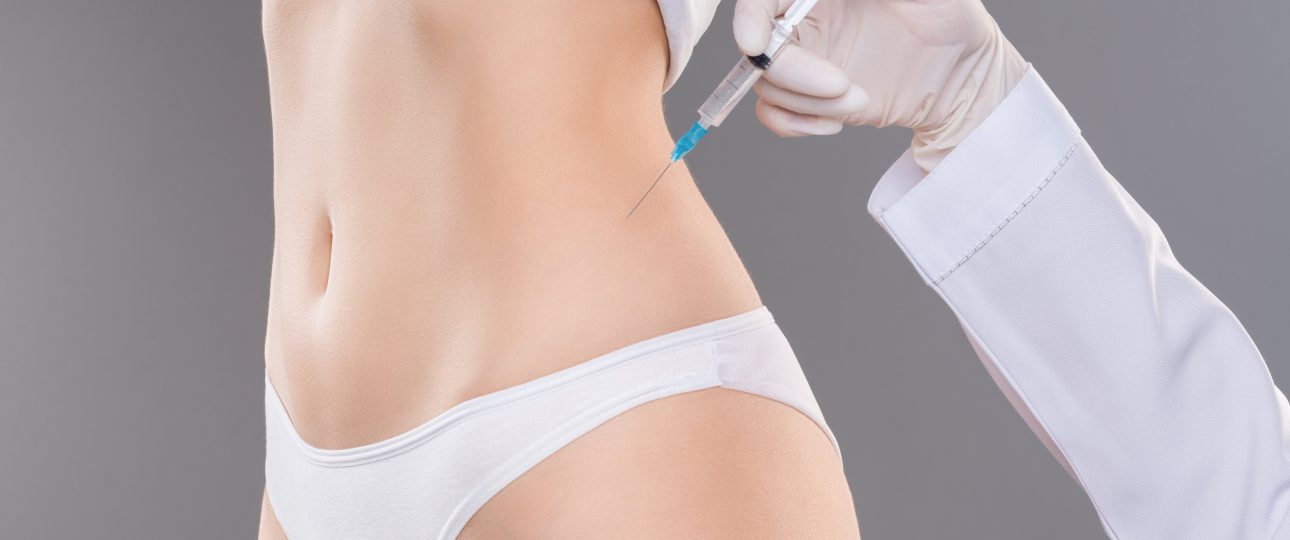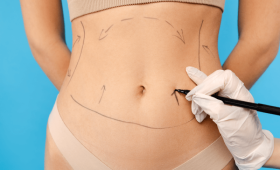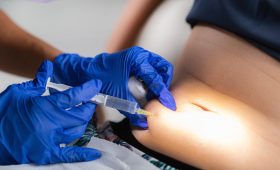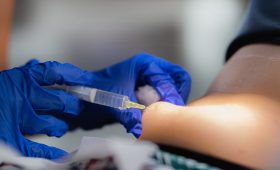What is Liposuction?
Liposuction is a procedure where stubborn and excess fat tissue accumulated in certain areas of the body is vacuumed out with the help of thin cannulas. This surgical procedure is applied to get rid of localized fat deposits that do not disappear despite diet and exercise. Liposuction is not a weight loss method but an aesthetic operation aimed at shaping the body contours and achieving a more proportionate silhouette. It is generally preferred for fat accumulated in areas such as the abdomen, waist, hips, thighs, back, and neck.
Who is a Suitable Candidate for Liposuction?
The most suitable candidates for liposuction are individuals who are close to their ideal weight but have a problem with localized fat deposits. People in good general health, with high skin elasticity, and who have realistic expectations from the operation get the best results from this procedure. Individuals with chronic diseases such as diabetes, heart, or circulatory system disorders must consult their doctors before the operation and take the necessary precautions. Liposuction is not the main weight loss method for overweight or obese individuals.
Is Liposuction a Weight Loss Method?
No, liposuction is not a weight loss method. This procedure is applied not to significantly reduce body weight, but to shape the body contours and eliminate localized fat deposits. The amount of fat removed with liposuction generally varies between 2 to 5 liters, which does not cause a big drop in total body weight. The most effective results are seen in individuals who have reached or are close to their ideal weight.
Is the Surgery Painful?
Liposuction surgery is generally performed under general anesthesia, so no pain is felt during the procedure. In small areas where local anesthesia is used, there may be a slight feeling of discomfort. In the post-operative period, a feeling of mild to moderate pain and ache may occur. This pain can be easily controlled with the painkillers prescribed by the doctor. Swelling, bruising, and a feeling of tightness are normal for the first few days.
How Long Does the Surgery Take?
The duration of liposuction surgery varies depending on the number of areas to be treated and the amount of fat to be removed from these areas. An operation performed on a single area usually takes 1 to 3 hours. If fat is to be removed from multiple areas on a large scale, this period can extend up to 4 to 5 hours. The surgery time also depends on the surgeon’s experience and the technique to be used.
What Methods Are Used?
The most common methods used in liposuction are: Vaser Liposuction, which uses sound waves to break up fat cells, thus providing less bruising and swelling. Laser Liposuction melts fat cells with laser energy and helps to tighten the skin. Classic (Tumescent) Liposuction is based on the principle of injecting a special liquid to swell the fats and then vacuuming them out. The doctor determines the most suitable method for the patient’s needs and body structure.
Do Scars Remain After Surgery?
Since the cannulas used in liposuction surgery are very thin, the incisions made are also quite small. These incisions are usually 3 to 5 millimeters in size and are often placed in the body’s natural folds or hidden areas. These scars, which are initially slightly red and prominent, become less noticeable over time by approaching skin color. The risk of a permanent and prominent scar is quite low.
How Long Does the Recovery Process Take?
The recovery process varies from person to person, but generally, the first week is the most intense period. Swelling, bruising, and edema occur after the surgery. These conditions reach their peak within the first few days and then gradually decrease. Most of the edema disappears within the first 3 weeks. It can take 3 to 6 months for the final results to emerge and for the body contours to fully settle.
When Can I Return to Work?
The time to return to work after liposuction depends on the type of work and the scope of the surgery. Those who work in an office job can usually return to work within 2 to 4 days. However, those who work in a more physically demanding job may need to rest for more than a week. It should be taken into account that there may be swelling and bruising on the body after the procedure.
When Can I Start Exercising?
Exercising during the post-operative recovery process is important, but it is necessary to start at the right time. In the first week, only light walks are recommended. It is generally necessary to wait 3-4 weeks before starting intense exercises and heavy sports. Especially sports that put pressure on the abdominal and waist area should be avoided during this period.
Are the Results Permanent?
Yes, the results of liposuction are permanent. This is because the fat cells are permanently removed from the body with this procedure. However, if weight is gained after the surgery, the remaining fat cells can grow and cause new fat deposits. Therefore, continuing a healthy diet and regular exercise after the operation is very important to maintain the results.
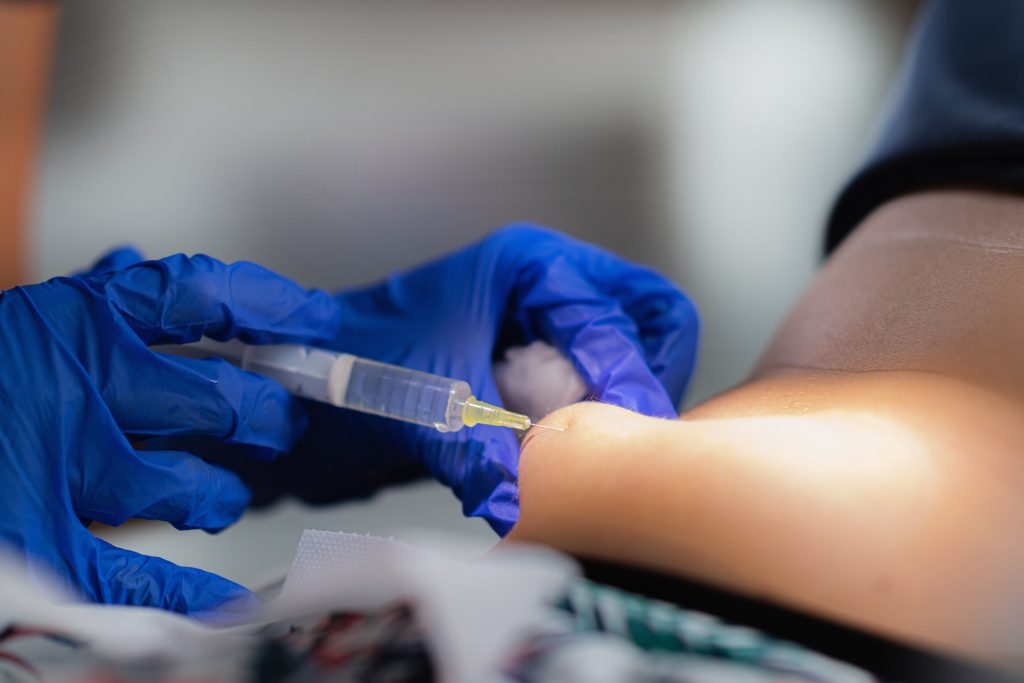
What Are the Risks and Complications?
As with any surgical procedure, liposuction also has some risks and complications. These include infection, bleeding, skin irregularities, loss of sensation, bruising, and edema. These risks can be minimized by choosing the right surgeon, performing the operation in a sterile environment, and following the doctor’s instructions meticulously. An experienced surgeon is more successful in managing these risks.
Is the Use of a Corset Necessary?
Yes, the use of a corset is mandatory after liposuction. These specially designed corsets help the swelling and bruising to subside faster by applying pressure to the operated area, make it easier for the skin to adapt to the new body contours, and reduce the risk of skin sagging. The corset plays a critical role in maintaining the aesthetic result obtained.
How Long Should the Corset Be Worn?
The use of a corset after liposuction varies according to the surgeon’s recommendation. It is generally recommended to be worn 24 hours a day for the first 2-3 weeks without interruption. After this period, the duration of corset use can be reduced with the surgeon’s approval. In some cases, it may be necessary to continue using the corset for up to 6 weeks. Following your doctor’s recommendations is very important to get the best result.
What Should Nutrition Be Like After Surgery?
Post-operative nutrition is important to speed up the healing process. In the first few days, salt-free and light foods should be preferred. Drinking plenty of water to reduce swelling and consuming foods rich in protein and fiber helps with healing. Staying away from processed foods, sugary drinks, and alcohol is of critical importance for a healthy recovery process.
Can It Be Applied to Every Part of the Body?
Liposuction can be applied to most body areas with localized fat accumulation and good skin elasticity. The most common areas of application include the abdomen, waist, back, hips, inner and outer thighs, around the knees, and the double chin area. These areas are where fat that is resistant to diet and exercise accumulates the most.
What is Vaser Liposuction?
Vaser liposuction is a modern liposuction method that uses ultrasonic sound waves to break up fat cells. In this technique, the sound waves only target the fat cells and do not damage surrounding tissues such as blood vessels and nerves. This minimizes post-operative bruising and swelling and speeds up the recovery process. Vaser offers the possibility of more precise shaping.
What is Laser Liposuction?
Laser liposuction is a technique that uses laser energy to liquefy fat cells. Laser energy breaks up the membranes of the fat cells, allowing these cells to be easily removed from the body. This method also helps to tighten the skin by stimulating collagen production under the skin, which is advantageous especially for areas prone to sagging.
What is Tummy Tuck Surgery?
Tummy tuck (abdominoplasty) surgery is the process of surgically removing excess skin and fat from the abdominal area and tightening the abdominal muscles. This operation is generally applied to get rid of the sagging and looseness that occurs in the abdominal area after childbirth or as a result of excessive weight gain and loss. Unlike liposuction, tummy tuck surgery also removes excess skin and provides a more noticeable tightening.
What is the Difference Between Liposuction and Tummy Tuck?
Liposuction is a slimming method that targets only fat tissue. It gives an effective result in people with good skin elasticity. Tummy tuck surgery, on the other hand, is a more comprehensive procedure that removes both excess fat and excess skin, eliminating sagging in the skin and tightening the abdominal muscles. If the patient has skin sagging, a tummy tuck is preferred; if there is only localized fat accumulation, liposuction is preferred.
Do Fat Cells Regenerate?
The fat cells removed from the body with liposuction do not regenerate. The number of fat cells is fixed in adulthood. With the surgery, some of these cells are permanently removed. However, the remaining fat cells can grow in volume if the person eats an unhealthy diet or gains weight. Therefore, a healthy lifestyle is important for the permanence of the results.
Can Cellulite Be Eliminated?
Liposuction is not the primary method for cellulite treatment. Cellulite is caused by the irregular distribution of fat cells under the skin and tension in the connective tissue. Although liposuction reduces the number of fat cells, its effect on the connective tissue is limited and therefore it does not completely eliminate cellulite. However, in some cases, a partial improvement in the appearance of cellulite can be achieved with localized fat removal.
What Factors Affect Prices?
Liposuction prices vary depending on many factors. These include the quality of the clinic or hospital where the operation will be performed, the surgeon’s experience, the amount of fat to be removed, and the number of areas to be treated. In addition, the type of anesthesia to be used and the liposuction technique (Vaser, Laser, etc.) are also factors that affect the price. A detailed examination is required to get a definitive price.
Is It Performed Under General Anesthesia?
Liposuction is generally performed under general anesthesia, which prevents the patient from feeling any pain or discomfort during the operation. For fat removal in smaller areas, local anesthesia can also be preferred. The type of anesthesia is decided by taking into account the patient’s health status and the scope of the operation.
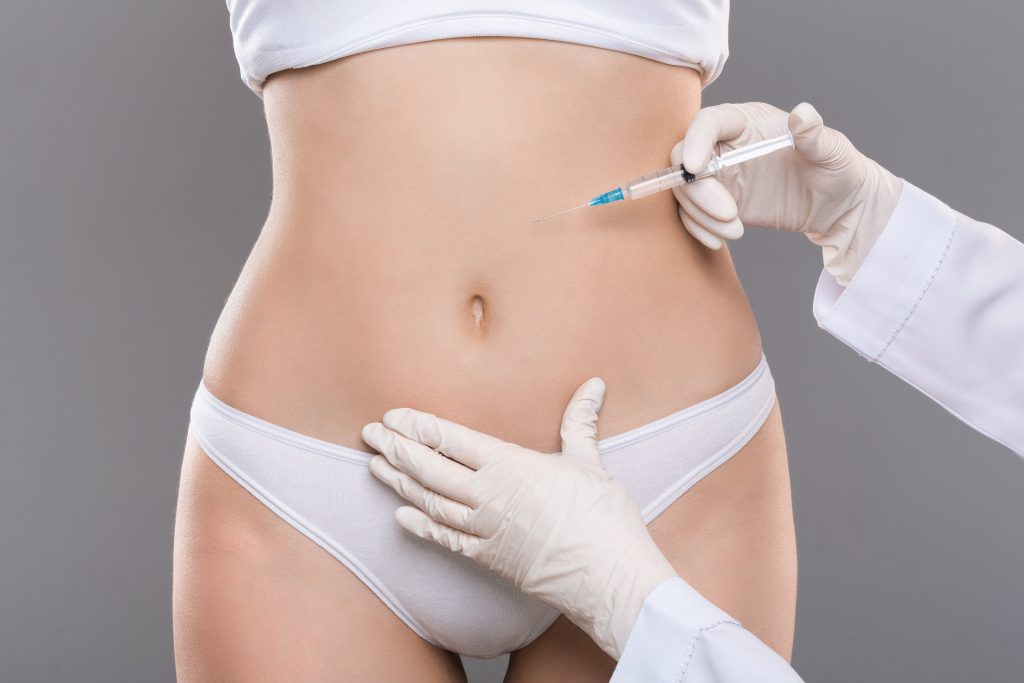
Does Skin Sagging Occur After Surgery?
Skin sagging can be seen in people with low skin elasticity before the surgery or in those who have a lot of fat removed. With modern liposuction techniques (like Vaser, Laser), the risk of sagging is reduced as they also support skin tightening. However, for patients with significant excess skin, liposuction alone may not be sufficient, and additional operations like a tummy tuck may be required.
Is Non-Surgical Liposuction Possible?
Today, various methods known as non-surgical liposuction are available. These methods include laser lipolysis, cryolipolysis, and radio frequency applications. Although these procedures are not as effective as surgical liposuction, they can help reduce fat accumulation in small areas.
How Much Fat Can Be Removed in a Single Session?
The maximum amount of fat that can be removed in a single liposuction session is determined by taking into account the patient’s general health status and safety limits. Generally, removing up to a maximum of 5 liters of fat is considered safe in one operation. Removing more fat can lead to serious fluid and electrolyte imbalances in the body and is a health risk.
Does It Solve Stretch Mark Problems?
Liposuction does not directly solve stretch mark (stria) problems on the skin. Stretch marks are tears that occur in the dermis layer as a result of the skin being overstretched. Although liposuction reduces the amount of fat in the skin, it does not change the appearance of the stretch marks. Different methods such as laser or topical creams are required for stretch mark treatment.
Is There an Age Limit?
Although there is no definite age limit for liposuction, it is generally a suitable procedure for individuals who have completed 18 years of age and whose body development is complete. In advanced ages, the risk of sagging may increase due to decreased skin elasticity. However, older individuals who are in good general health can also successfully have liposuction.
What Are the Health Benefits?
In addition to its aesthetic benefits, liposuction can also have some health benefits. Since it eliminates localized fat deposits that are not related to obesity, it allows the person to perform physical activities more comfortably. Furthermore, the improvement in aesthetic appearance contributes positively to the person’s psychological health by increasing their self-confidence.
How you prepare?
You should not stop taking certain medications, such as blood thinners or NSAIDs, at least three weeks before the surgery. If you have any health problems, you may need to have some tests.
During the procedure, depending on how much fat you are going to have, the oil can sometimes be performed in the clinic, or sometimes in the operating room. In both cases, you will need to have a companion with you after the procedure. For this reason, this situation should be resolved with a family member or friend before the procedure.
Why Clinic Selection Matters?
Liposuction carries small risks, as with any surgery. The risks specific to liposuction, on the other hand, mostly develop after the preferred false clinic and are as follows;
Contour irregularities: After irregular fat intake, it may cause a disproportionate appearance in the body. Damage to the thin tube used during liposuction under the skin can give the skin a permanent stained appearance.
Fluid accumulation. During application, temporary fluid pockets may form under the skin. It is not a major problem, the liquid can be drained with the help of a needle.
Numbness: As a result of an unsuccessful procedure, your nerves may become irritated. Permanent or temporary numbness may be experienced in the application area.
Infection: If your preferred clinic does not give importance to hygiene, a skin infection may occur. It is rare but possible. A serious skin infection can be life-threatening. This shows how important clinical selection is.
Internal puncture: It is a very low risk. The application needle can puncture an internal organ if it penetrates too deeply. This may entail an emergency surgery.
Fat embolism: During separation, oil particles can splash from one area to another. It can become trapped in a blood vessel and collect in the lungs or travel to the brain. This risk is quite life-threatening.
Is It Safe to Have Liposuction In Turkey?
Turkey is a highly developed country in the field of health tourism. Therefore, great importance is attached to health in the country. Clinics are always sterile. Doctors are experts and experienced people in their fields. Due to the development of health tourism and affordable treatments, doctors treat many patients in one day. This makes doctors more experienced. The reason why Turkey has achieved such successful results is the successful treatments. Compared to many countries, more hygienic, more successful and more affordable treatments are the factors that the biggest role in patients’ preference for Turkey.
Who Can’t Get Liposuction In Turkey ?
Candidates who want to have liposuction in Turkey should be at or close to their ideal weight. It is a method applied to get rid of stubborn regional fats. It should not be forgotten that it is not a weight loss method. However, in some cases, candidates cannot do this. These situations are:
- Pregnancy
- Thromboembolic disease
- Heart disease
- Severe obesity
- Wound healing disorder
- Diabetes
- Life-threatening illness or disorders
Liposuction Price in Turkey 2025
Liposuction + 2 days hospital stay + 5 days 1st class hotel accommodation + breakfast + all transfers within the city are only 1200 euros as a package. The needs of the person who will be with you during the process are also included in the package price. Prices are valid until the new year.
Why Is It Cheap To Get Treatment In Turkey?
Turkey’s cost of living is quite low. One of these reasons. The second and biggest reason is that the exchange rate in Turkey is very high. This allows the tourists coming to the country to receive treatment very cheaply. It enables them to meet not only their treatment, but also their needs such as accommodation, transportation and nutrition at a very affordable price. This makes it attractive for many tourists to take a vacation while receiving treatment.
